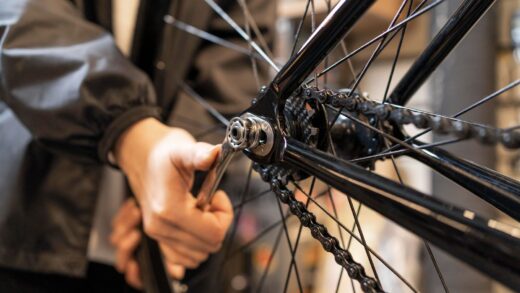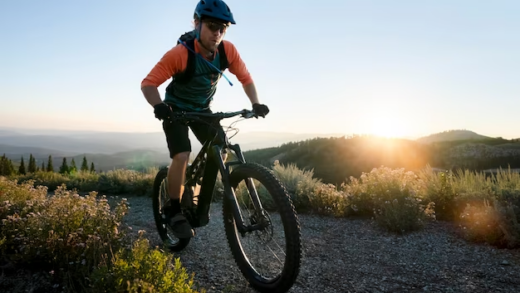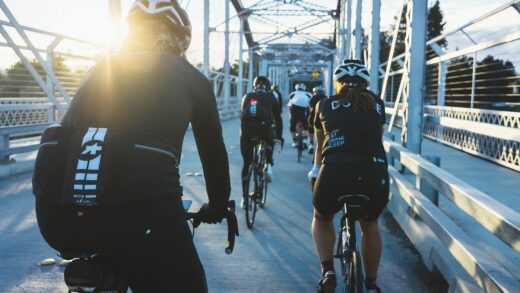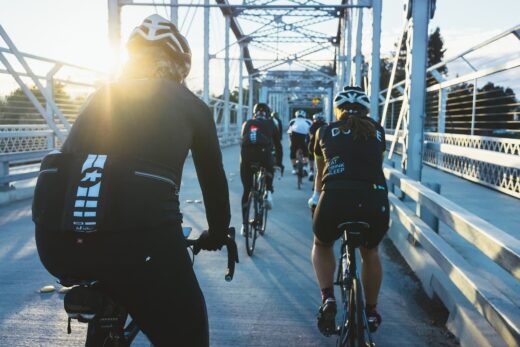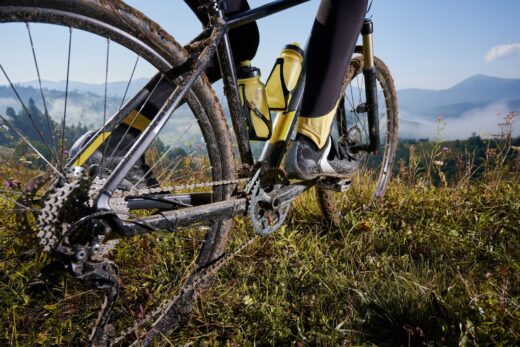In the realm of cycling, Rockshox stands as a renowned and respected name, crafting top-tier components that strike a balance between quality and affordability.
Nonetheless, determining the appropriate fork length for your bicycle can pose a challenge due to the lack of standardized measurements across manufacturers.
During your exploration of RockShox bike specifications, you may encounter a significant tool: the RockShox axle to crown chart. But what exactly does this chart entail?
The axle to crown chart serves as a method to precisely define fork length in contemporary bicycles. Within the RockShox lineup, four distinct crown sizes are present, each contributing to variations in axle to crown length. For instance, 28mm crowns exhibit a compact length ranging from 430mm to 450mm, while 400mm crowns boast the longest forks, spanning approximately 530mm to 565mm.
Rest assured, while this might initially appear perplexing, a little patience on your part will pave the way to clarity and understanding.
Without further ado, let’s delve right into the intricacies of this subject.
Understanding Axle to Crown Length in Bicycles
In the realm of modern bicycles, the measurement of fork length is frequently described from the axle to the crown. However, this specification might differ when dealing with bikes equipped with suspension systems.
There are two available options: measuring unsagged fork lengths or measuring fork lengths with sag.
- The unsagged length of a bike fork represents its total length without any compression. It’s a measurement taken without considering external factors, providing the fork’s full extended length;
- Conversely, the sagged length refers to the fork’s dimension after it has undergone compression due to weight. In this scenario, the rider’s weight is factored in, resulting in a more accurate representation of the fork’s operational length.
The Significance of Axle to Crown Length in Bicycles
Understanding the impact of axle to crown length on bike geometry is crucial due to its direct influence on various attributes. This effect becomes particularly pronounced when replacing a damaged fork or transitioning to suspension forks.
In order to assess and interpret these modifications effectively, it’s essential to have knowledge of the initial fork length that was used to establish the original geometry.
Introducing a longer rake within the fork contributes to enhanced bike handling capabilities. Conversely, shorter forks lead to an elongated trail, resulting in steadier and more substantial steering, particularly when navigating tight corners or uneven terrain.
Impact of Axle to Crown on Bike Geometry

The transformation of your bicycle’s geometry is intricately linked to changes in axle-to-crown length. Bicycle frames are typically tailored to accommodate forks with specific travel capacities, which dictate the angle of the head tube. This angle, in turn, exerts a profound influence on the bike’s handling characteristics. For instance, cross-country (XC) bikes often possess steeper head angles, typically ranging from 70 to 71 degrees, favoring agile and swift maneuvering. On the contrary, freeride and downhill bikes tend to feature head angles between 69 and 67 degrees, finely tuned for tackling steep descents.
A steeper head angle facilitates quick turns, although it may introduce a slight sense of instability when riding downhill. In contrast, a more relaxed head angle enhances stability at higher speeds and during downhill descents, albeit requiring more precise control.
Another critical factor to consider is travel reduction. The axle-to-crown measurements can significantly impact the travel capacity of your RockShox fork.
Hence, it becomes evident that axle-to-crown measurements play a pivotal role in determining various essential aspects of bicycle geometry.
Rockshox Bikes: Navigating the Axle to Crown Chart
Navigating the realm of determining axle-to-crown length can present a notable challenge, particularly due to the absence of standardized reference charts across manufacturers. Consequently, the task of measuring axle-to-crown length, especially within the context of RockShox bicycles, can be as perplexing as choosing between RockShox Sid and Reba models.
Furthermore, variations in head tube angles can introduce deviations of 1 to 2 degrees, further adding to the intricacy. For instance, a mere 10mm change in crown length can lead to a ½ degree alteration in the head tube angle.
To streamline this complexity, we’ve curated an axle-to-crown chart designed specifically for RockShox bicycles. Let’s delve into this resource to attain a heightened level of clarity.
| Fork Length | Model | Measurements (mm) |
|---|---|---|
| 28 mm | Model 99-08 SID 63 | 434mm 99-08 SID 80: 451mm |
| 32 mm | Model SID 80 | 453mm |
| Model SID 90 | 463 | |
| Model SID 100 | 473 | |
| Dart 80 | 454 | |
| Dart 100 | 471 | |
| Dart 120 | 501 | |
| Tora XC/SL/RACE 80 | 450 | |
| Tora XC/SL/RACE 100 | 470 | |
| Tora AM 80 | 459 | |
| Tora AM 100 | 479 | |
| Tora AM 120 | 499 | |
| Tora AM 130 | 509 | |
| Recon XC/SL/RACE 80 | 451 | |
| Recon XC/SL/RACE 100 | 471 | |
| Recon AM 80 | 459 | |
| Recon AM 100 | 479 | |
| Recon AM 120 | 499 | |
| Recon AM 130 | 509 | |
| 05-08 Reba 85 | 458 | |
| 05-08 Reba 100 | 473 | |
| 05-08 Reba 115 | 488 | |
| Reba 80 | 453 | |
| Reba 100 | 473 | |
| Reba 120 | 493 | |
| 06-08 Revelation 100 | 478 | |
| 06-08 Revelation 115 | 493 | |
| 06-08 Revelation 130 | 508 | |
| Revelation 140 | 521 | |
| Revelation 140 w/Maxle Lite | 518 | |
| Pike 95 | 473 | |
| Pike 140 | 518 | |
| Boxxer Ride 130 | 494 | |
| Boxxer & Ride 174 | 544 | |
| Boxxer 200 | 568 | |
| 35 mm | Lyrik 115 | 500 |
| Lyrik 160 | 545 | |
| 40 mm | Totem 135 | 530 |
| Totem 180 | 565 |
Each of these models comes with a tolerance of +/- 5 mm.
- Examining the chart reveals a pattern: the crown length rises proportionally with the fork size. The most compact fork length belongs to the 28 mm models, ideal for bicycles featuring low-profile seats;
- Conversely, models with a diameter of 40 millimeters exhibit the lengthiest measurements;
- Due to its extended length, a trail fork can accommodate more travel, rendering the bicycle easier to manage in specific scenarios.
If you’re curious about the methodology behind measuring the distance from the axle to the crown, our article offers a simplified explanation tailored for your convenience.
A Guide to Measuring Axle to Crown Length
For precise measurements, it’s recommended to work in millimeters. However, you can convert other units of measurement with reasonable accuracy.

Before diving into measuring fork length, ensure a clean fork. Dirty forks can lead to inaccurate measurements.
- Use a Bicycle Chain & Drivetrain Cleaning Kit or Bike Wash to give it a thorough cleaning before proceeding with measurements;
- To start, replace the front wheel with a quick release or thru-axle in the bicycle’s fork;
- Check that the lowers are fully extended by gently pulling on them. If they encounter any obstructions, your measurement accuracy might be compromised;
- The center of the back of the axle lies behind the arch on the lowers. Measure from the top of the crown, which is the bottom of the headset race, and extend to the center of the back of the axle.
With this method, you can achieve a measurement accurate within a few millimeters. Be attentive and precise during this process as changes in fork length directly impact bike geometry. After completing the measurement, enhance performance by applying Forkboost Lube for an added boost.
Conclusion
This concludes our discussion on the RockShox axle to crown chart. By now, you should have a clear understanding of the fork lengths associated with each model. To ensure peak performance, remember to apply grease to your axle every 500 miles. Feel free to share your thoughts and feedback in the comments section below.
Frequently Asked Questions
The recommended maximum air pressure is 163 psi. Bounce-back suggestions are based on the full clockwise or full slow position. Adjustments to your suspension might be necessary based on your riding style, the terrain you tackle, and your bike’s geometry.
Locating the serial number on your RockShox fork is straightforward. Look at the back of the fork crown for a distinct serial number. The part of the fork that enters the head tube is known as the fork crown. Adjusting your handlebars to the side can provide a better view of the serial number.
No, it’s not. However, excessive travel can alter the feel of your trail bike. For optimal results, trail forks should generally feature 34mm stanchions, ranging from 130mm to 140mm in length for a 29er wheel. For a 27.5 wheel size, the travel could potentially extend up to 150mm.
